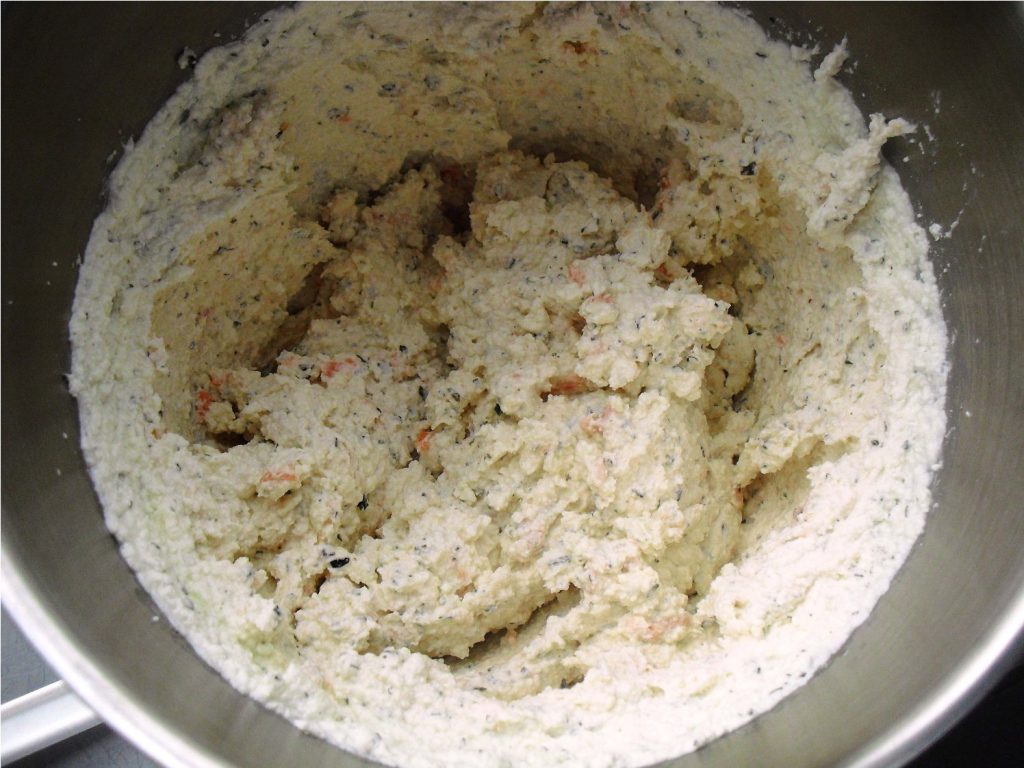As a food product, algae are a real goldmine. They are rich in vitamins, minerals, trace elements and fibre. In Asia, food products containing algae have long been on the menu. These marine suppliers of nutrients are regarded as a healthy delicacy. In Germany however, food products made with algae are a rarity – algae are mostly used here in the pharmaceuticals and cosmetics industries. ttz Bremerhaven and Meierei Langenhorn, a North German dairy, want to establish this vitamin-rich food on the supermarket shelf.
Bremerhaven, 1 April 2011. In the framework of “Algaefood”, a project funded by the national government, ttz Bremerhaven and Meierei Langenhorn, a dairy in North Germany, are developing milk products containing algae which aim to prevent and compensate for dietary deficiencies. Curd cheese and (cream) cheese products are enriched with previously treated North Sea algae and in this way transformed into functional foods which – apart from their nutritional value –also have a healthy effect.
Macroalgae are characterized by their high value in terms of nutritional physiology: They contain a high concentration of minerals, vitamins, trace elements and fibre and have a low fat content. The food products developed by ttz Bremerhaven and Meierei Langenhorn are expected to increase consumers’ quality of life and lead to a richer variety of tastes. Raising the popularity of food products containing algae will contribute to a general improvement in health.
In its food production, the “Algaefood” project uses young North Sea macroalgae from aquaculture which are obtained from an algae farm on the island of Sylt. The controlled ecological cultivation has a positive influence on the mineral content, the content of secondary plant metabolites and the heavy metal concentration of the algae. The algae are processed by ttz Bremerhaven and the dairy in Langenhorn using specially developed crushing processes and drying technologies such as air, freeze and fluidized bed drying and then added to curd cheese and (cream) cheese products. The recipes developed by Meierei Langenhorn are created in such a manner that the algae have a positive influence on the taste, texture and appearance of the milk products.
With the help of various analysis processes (HPLC and IC), ttz Bremerhaven examined the nutritional content and secondary plant metabolites in the macroalgae prior to and after processing. This guarantees that these valuable substances are preserved in the end product after the drying and crushing processes. Further analyses examined whether the algae contain critical substances such as heavy metals or pathogenic germs such as Listeria, E. coli or staphylococci.
Laminaria saccharina, a type of brown algae, is used for the process. It contains a large number of minerals such as calcium and magnesium, as well as trace elements such as iron, and the vitamins A, B1, B2, B3, B12, C and E. The nutrients are absorbed in the gastrointestinal tract, the main part of the digestive tract, with the help of secondary plant metabolites such as proanthocyanidins. The iodine content of the Laminaria saccharina from the Sylt algae farm is about ten times lower than the fully grown algae obtained from the sea and is suitable for consumers with an iodine deficiency. Whilst an iodine deficiency interferes with the thyroid function, too high iodine consumption also has harmful health effects. In Germany, which is an iodine-deficient country, the Deutsche Gesellschaft für Ernährung (German Nutrition Society) recommends a daily iodine supply of about 0.2 milligrams of iodine for adults and adolescents and the maximum daily dose is 0.5 milligrams of iodine. In the cream cheese recipes developed, a maximum amount of 0.092 milligrams of iodine per 100 grams of product was used. 100 grams of low-fat curd cheese contain a maximum of 0.047 milligrams of iodine.
In the framework of sensory tasting trials, ttz Bremerhaven examined the acceptance threshold of seven testers towards the algae. The maximum addition of iodine from algae must not be exceeded in order not to have a negative influence on the product. On the basis of the results, Meierei Langenhorn developed recipes for curd cheese and (cream) cheese products. Curd cheese with algae as well as with different spices, herbs and salmon was tested. In its sensory laboratory, ttz Bremerhaven then determined consumers’ acceptance and willingness to buy. In accordance with the target group, 60 men and women between 20 and 65 years of age rated curd cheese products containing algae. The tasting trials were carried out as a blind test, i.e. no information was given about the manufacturer or the product’s packaging. The testers were open-minded towards these nutritious food products: Two of the curd cheese products containing algae, curd cheese with Indian spices and curd cheese with wild garlic, could be marketed later once the recipes have been refined.
Further information on Algaefood you will find in the project discription.
Press pictures for editorial use (foto: ttz/pr)
Picture 3:
Einfluss des Abkochens der Algen auf den Jodgehalt (F: Frische Algen; K: Abgekochte Algen; *Angabe des Lieferanten)
Picture 4:
Acceptance profile of three curd recepies with and without algae (Scale from 1 (very bad) to 7 (perfect))
Download with right mouse button: “Save as…”
ttz Bremerhaven is an innovative provider of research services and operates in the field of application-oriented research and development. Under the umbrella of ttz Bremerhaven, an international team of experts is working in the areas of food, environment, health and consulting.








